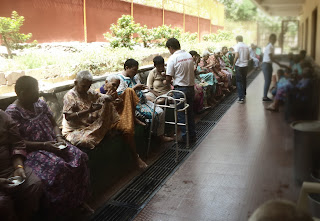Religion and India
Karl Marx quoted, ‘Religion is the opium of the masses’. We all know and are accompanied by one or more form of religions. India being a pluralist society comprising of Hindu, Muslim, Christian, Jain, Buddhist, Sikh and even few Jews etc. which give us an opportunity to live in a more diverse environment, observe more cultures and festivals and enjoy a colorful life. But is it happening? Are we really able to enjoy the differences instead of creating tensions? Answer can be No, Yes, maybe, not sure depending on our perspectives, our own environments where we live and are brought up, our conditioning from family, from schools, from the friend circle, from the media we follow, movie we watch, songs we listen, newspaper we read and so on. Religion is different to someone belonging to an upper class than to a middle class and then to a poor class. An upper-class person may enjoy wonderful perspectives and opinions on religion from a book, can actually live a religious life, conduct himself or herself to the way he believes in but a poor street vendor may not bother about it at all; his thoughts may wonder on filling up his and his family stomach first. It won’t matter much to a poor what is happening in macroeconomics. He focuses on day to day sustenance. Anyway, he has no leverage or control in his life, he has less to lose or nothing to lose. If there is a festival, he may think of the free food distribution comparing to a middle class of the increasing level of prices and then to the upper class where to go for vacations?
India is largely a poor society. UN has reported that by 2030 we may become an upper-middle-class society. Our economy is large when looking at the GDP or purchasing power parity where we stand 6th or 3rd respectively. There is another part of the story and that is our huge population which makes our per capita income a meager number.
Okay, what is a religion? Is it that only to follow some god is religious? Religion may or may not have Gods. It might be a simple theory or a text that we love to follow. We can also attach it to a famous personality from past e.g. Dr. B. R. Ambedkar. His work and standings for the downtrodden of India have made him close to many people in India. They also call themselves Ambedkarite. Similarly, it may be for a Gandhian, Marxist etc. Thus there can be people who believe in worldly power and some who believe in material matters and practical problems. Swami Vivekananda redefined sainthood from self-attainment to social upliftment of the ‘socially-poor’. Raja Ram Mohan Roy had acquainted himself from many religious texts. In a way, he was not focused on a single religion and he also compared the ground social realities based on religion to the various texts supposedly to the source of all the thoughts. That’s how he countered Sati culture.
We are living in a world where many religions exist and there is a sizeable number of people for each religion distributed unevenly in the geography of the earth and more so owing to globalization and migration. In such circumstances is it not the duty of the state to be secular, be neutral? In fact, in the interconnected world, everyone is watching more closely and there is more data for scrutiny. History is thus more accessible than ever and no doubt today is history for tomorrow.


Comments
Post a Comment